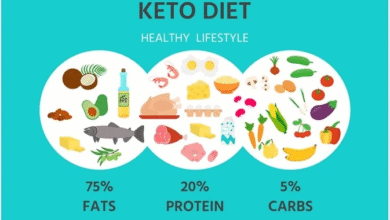Sheep Milk in Keto Diet : A Comprehensive Guide

Nutritional Profile of Sheep’s Milk
Sheep’s milk stands out as a nutrient-dense dairy option with unique characteristics:
Per 1 Cup (244g) of Whole Sheep’s Milk:
| Nutrient | Amount | % Daily Value |
|---|---|---|
| Calories | 265 kcal | – |
| Fat | 17g | 26% |
| Saturated Fat | 11g | 55% |
| Protein | 15g | 30% |
| Carbohydrates | 13g | 4% |
| Calcium | 473mg | 47% |
| Vitamin B12 | 1.7mcg | 71% |
Key advantages over cow/goat milk:
- Higher medium-chain triglycerides (MCTs): 25% more than cow’s milk
- Rich in conjugated linoleic acid (CLA): Potent anti-inflammatory
- Better calcium bioavailability: 30-35% more absorbable
- Contains all essential amino acids: Complete protein source
The Keto Compatibility Challenge
Carbohydrate Content Analysis
While nutrient-dense, sheep’s milk presents keto dieters with three significant challenges:
- Net carb load: 13g per cup (potentially 25-65% of daily keto allowance)
- Lactose content: Approximately 4.5g per cup (milk sugar)
- Insulin response: Dairy proteins may stimulate insulin secretion
Comparative Dairy Carb Counts:
- Sheep’s milk: 13g net carbs/cup
- Goat’s milk: 11g net carbs/cup
- Cow’s milk: 12g net carbs/cup
- Heavy cream: 3g net carbs/cup
Fermentation: The Keto Solution
The transformation of sheep’s milk into cheese solves its keto limitations through:
The Fermentation Process
- Lactose consumption: Bacteria convert milk sugar to lactic acid
- Whey removal: Further reduces carb content
- Nutrient concentration: Increases fat/protein ratios
Keto-Friendly Sheep’s Milk Products
| Product | Net Carbs (per oz) | Fat (g) | Best Keto Uses |
|---|---|---|---|
| Pecorino Romano | 0g | 8 | Grating, snacks |
| Feta | 1g | 6 | Salads, omelets |
| Roquefort | 0.5g | 8 | Dressings, sauces |
| Manchego | 0.5g | 8 | Cheese boards |
Practical Keto Applications
Smart Incorporation Strategies
- Cheese-first approach: Prioritize aged sheep cheeses
- Microdosing milk: Use ≤2 tbsp in coffee/tea
- Cultured products: Yogurt (strained) can contain 5g carbs/cup
- Fat boosting: Blend with heavy cream (1:3 ratio)
Sample Keto Meal Plan with Sheep Dairy
Breakfast:
- 3 eggs with 1 oz Manchego
- 1/4 avocado
Lunch:
- Spinach salad with 2 oz feta
- Olive oil dressing
- Grilled chicken
Dinner:
- Lamb chops with rosemary
- Roasted zucchini with Pecorino
- 1 tbsp sheep milk yogurt sauce
Health Benefits Beyond Keto
Unique Nutritional Advantages
- Gut health: Contains oligosaccharides that act as prebiotics
- Bone density: Superior calcium/phosphorus ratio
- Immune support: High zinc and selenium content
- Metabolic health: CLA may improve body composition
Comparative Analysis (per 100g)
| Nutrient | Sheep | Goat | Cow |
|---|---|---|---|
| Protein | 5.4g | 3.6g | 3.2g |
| Calcium | 193mg | 134mg | 120mg |
| Vitamin B12 | 0.7mcg | 0.1mcg | 0.4mcg |
| Riboflavin | 0.4mg | 0.1mg | 0.2mg |
Special Considerations
For Lactose Intolerance
- Aged sheep cheeses contain minimal lactose
- The A2 protein structure is more digestible
- Cultural practices (like raw milk) may enhance tolerance
For Weight Loss
- Higher protein increases satiety
- CLA content may support fat loss
- Portion control remains essential
Expert Recommendations
- Quality matters: Seek grass-fed, organic sources
- Start small: Introduce gradually to assess tolerance
- Monitor ketosis: Track blood ketones when adding
- Balance intake: Rotate with other keto fats/proteins
Pro Tip: Combine sheep cheese with high-fiber foods (like flax crackers) to further mitigate any glycemic impact.
Conclusion: A Niche Keto Superfood
While liquid sheep’s milk poses carb challenges for strict keto adherents, its fermented derivatives represent exceptional nutritional opportunities. By focusing on properly aged cheeses and cultured products, keto dieters can harness sheep dairy’s superior nutrient profile without compromising ketosis. The key lies in mindful portioning and selecting products where fermentation has optimally transformed the original milk composition.
For those seeking keto diversity with ancestral nutrition benefits, sheep’s milk products offer a flavorful bridge between modern dietary strategies and traditional food wisdom.






